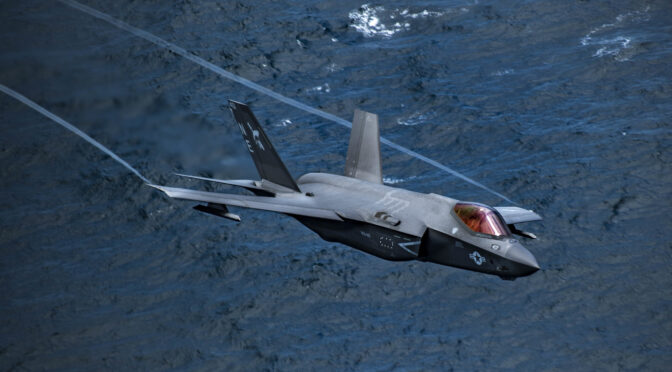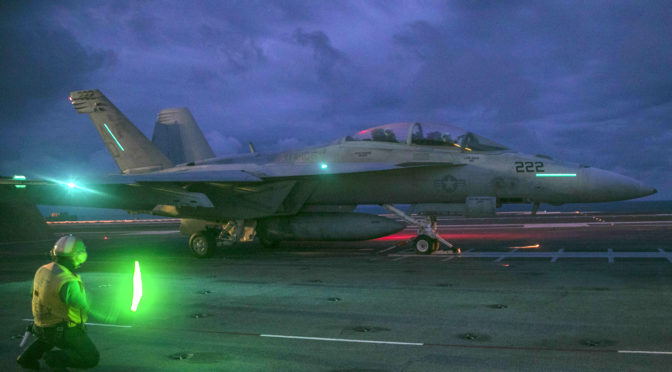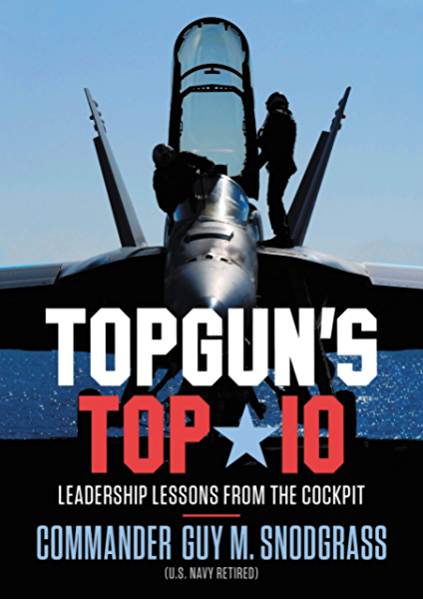By CDR Robert “Jake” Bebber, USN
Strategy of Denial: American Defense in an Age of Great Power Conflict (Elbridge A. Colby, Yale University Press, 2021)
An emerging consensus has developed in both foreign policy/national security circles and among the American public that Communist China represents a clear threat not only to U.S. security, but also to a liberal rule-based order that has existed since the end of the Cold War. This is a rather remarkable turn from just a few short years ago. Today, one would have little problem finding books, podcasts, think tank reports, and other media that highlight the threat China poses.
No doubt the few professionals who sought to raise awareness to what China was doing and were subsequently derided as “alarmist” prior to 2015 – Michael Pillsbury, Gordon Chang, Anders Corr, and David Shambaugh, among others, come to mind – perhaps feel a sense of vindication. However, much time has been lost for U.S. policy makers to shift our strategic resources in a meaningful way, time that cannot be regained.
Despite this emerging consensus, few have put forward meaningful strategies to secure American interests while realistically meeting the challenge China poses head on. Fortunately, Dr. Elbridge Colby, former Deputy Assistant Secretary of Defense for Strategy and Force Development, has risen to the challenge, putting forward a provocative and perhaps controversial recommendation: a strategy of denial.
The logic of Dr. Colby’s strategy can be summarized thus: To ensure America’s freedom, security and prosperity, the United States must maintain a favorable military-economic balance of power with respect to key regions of the world. Asia’s demographic and economic weight clearly place that region as the most important to American interests, and therefore the cornerstone of American policy must ensure that Asia is not subjected to regional hegemony. To maintain a favorable balance of power, the U.S., along with allies, friends, and partners (the anti-hegemonic coalition), must be capable of prevailing in a regional war initiated by an aspiring hegemon.
China’s own pronouncements and aggressive behavior clearly point to its desire to dominate Asia first, likely followed by the rest of the world. Naturally, China’s desire for regional hegemony will create a backlash, and states with common interests may band together. This anti-hegemonic coalition would effectively be defensive in nature. It would not seek regime change in China, but merely to prevent it from becoming dominant.
As the most important external balancer in an anti-hegemonic coalition, it is critical that the United States preserve its differentiated credibility related to denying China regional hegemony.1 Doing so requires U.S. policy makers to structure its military forces in such a way that preserves and ideally enhances its differentiated credibility. This demands that force structure and capabilities be prioritized around identifying and defeating China’s best strategy to achieve regional hegemony.
Colby walks through the strategies China might pursue before identifying what he evaluates as its best strategy to assume regional hegemony: utilize a focused and sequential strategy to effectively isolate and pick off members of the anti-hegemonic coalition, creating a fait accompli of regional dominance. For both ideological and military reasons, Taiwan is the prime target of China’s focused and sequential strategy, followed by the Philippines, then Vietnam. China’s conditions of victory are met when it seizes and holds territory, while the best strategy for the anti-hegemonic coalition to pursue is a denial strategy, where the core strategic purpose is met by keeping Taiwan on the side of the coalition.
An effective denial strategy is one which prevents China from seizing territory in Taiwan, or if that cannot be prevented, then from holding on to such territory. This requires that the coalition, led by the United States, be prepared to fight a longer, broader but still limited war and be able to end that war on favorable terms. Keeping a limited war limited will be paramount, as the risk of horizontal and vertical escalation will be great. Therefore the coalition should layer cost imposition on top of effective denial to persuade China to accept the defenders’ preferred rule sets for limited war as well as inducing China to agree to terminate the war on favorable terms.
The challenge of doing so cannot be overstated. China can bring immense military and economic power to bear, and it will be an exceptionally determined foe. The resolve of the American people and the people of allied nations and coalition partners will be sorely tested to bear the costs of adapting and optimizing military forces for effective denial defense and prosecute a potential long, limited war. There is a good probability that denial defenses might fail in part or completely, requiring the coalition to adapt and seek to recapture Taiwan or the other allied and partner nations.
Therefore, considerations must be given on how to influence and shape the resolve of the people and bind them to the outcome of the war. A component of strategy must be to force China to fight in ways that change or reinforce the coalition’s threat perception. China will be made to reveal its aggressiveness, ambition, cruelty, unreliability, power, and disrespect for the honor of other states, which in turn strengthens the resolve of coalition members. The premise of the binding strategy is that military and other material power is employed to create “political, perceptual effects that matter in war.” Thus, military planning must sometimes serve political purposes that shape the war to unfold in such a way that key decision makers and populations “increase their valuation of the stakes at hand.”
The implications of this strategy are clear and come with hard choices and trade-offs. Preventing China’s regional hegemony in Asia must receive top priority in U.S. defense planning and resources. Denial defense must become the preferred standard. In concrete terms, the U.S. and partners must focus first on the effective defense of Taiwan, followed next by the Philippines. The coalition must be prepared to integrate the binding strategy described above with denial defense so that if the war broadens or intensifies, it does so in ways that catalyze popular resolve. These strategies form the “bounding constraints” which inform military-operational planning and budgeting, technological policy, and diplomatic efforts.
As expected, Dr. Colby’s denial strategy has stirred both discussion and controversy. David P. Goldman, economist and former advisor to the Reagan Administration (as well as the Asia Times columnist formerly writing under the pseudonym “Spengler”) finds the strategy not only a “disappointment” but “a dangerous amalgam of dodges that points down the slippery slope towards war.” Any attempt by the United States and the anti-hegemonic coalition to adopt a strategy that openly postures forces to defend Taiwan is akin to setting in motion the events that led to World War I. Taiwan is “an existential issue” for the Chinese Communist Party, and the eventual integration of Taiwan into CCP control is simply a forgone conclusion he asserts.
For Goldman, any military conflict with China – especially close to its shores – would result in defeat anyway. The American military (and its allies in the coalition one presumes) are so hopelessly outmatched after two decades of “colonial wars,” and China can bring immense destructive power to bear on the American homeland without even having to escalate to nuclear weapons, that defeat is all but certain. Besides, Taiwan “has no intention of offering serious resistance” anyway, so why should American fighting forces die for them? (Or Japanese or Australian or anyone else one assumes.) Given that it would take “a trillion dollars of high-tech R&D funding and several years to counter China’s missile, cyberwar, and other offensive capabilities,” along with strong leaders – a President “with an evangelical fervor for national renewal” – it is best not to provoke a powerful adversary like China, at least not until you are prepared. (And with a maximalist approach such as Goldman’s, one doubts we are ever truly prepared.)
On the other hand, Dan Blumenthal of the American Enterprise Institute, writes in the Wall Street Journal that Dr. Colby’s “book presents a needed path forward.” He is “forcing readers to think concretely about the unthinkable” as he argues that it is indeed possible for the U.S. and coalition members to keep the war limited in scope so long as the burden of escalation remains on China. A denial strategy will “define the basis for future debate about U.S. defense strategy in Asia,” and would serve as the organizing principle around which all elements of national power need to be employed. And yet Blumenthal takes issue with Colby’s core assumptions of the strategy, which he believes are based on mere “political realism.”
Indeed, CCP behavior toward Taiwan remains a “legacy of the Chinese civil war” and is not merely a geopolitical steppingstone toward regional hegemony but is “an imperial idea” and a matter of national honor. The existence of a democratic Taiwan is an existential threat to the CCP in their eyes, and the CCP is currently “intoxicated by notions of reuniting a dismembered Volk,” perhaps prepared to start a world war to settle the matter. This follows the contours of part of Goldman’s critique but does not share his pessimism in the ability of the U.S. and coalition to marshal the forces and resolve.
But this does call into question the efficacy of relying solely on a strategy of denial to counter China’s best strategy, a focused and sequential strategy, to become the regional hegemon in Asia. It requires that the leadership of the CCP – principally one man, Xi Jinping – reach the conclusion that Taiwan cannot be taken, and hence the entire project of reunification, and perhaps global supremacy, must be abandoned. The strategic end state for the anti-hegemonic coalition becomes “winning by not losing,” but it is effectively asking that the American public (as well as the publics of our partners) indefinitely fund and politically support a military force posture designed around defense and maintenance of the status quo.
At some point, political leadership will be asked the same question President Reagan was at the 1988 Moscow summit, what is the strategy for ending the Cold War? Reagan famously stated, “Here’s my strategy on the Cold War: we win, they lose.” He did not hold to the Communist Party in the Soviet Union maintaining its grip on power forever, and upon taking office embarked on a strategy to defeat them. Playing on the defensive is necessary, but not sufficient, to achieve victory.
If China invades Taiwan, and the coalition can beat it back in a war limited in scope and aims as described by Dr. Colby, well then what? An immense amount of blood and treasure will have been spilt, and Taiwan will almost certainly have suffered significant damage. Even though they are a rich country, rebuilding will be expensive, and they will need substantial help. Potentially thousands of American lives will have been lost, perhaps more. Will the American people be willing to accept the status quo ante as the outcome, akin to the end of the Korean War in 1953? Or will the people demand more, such as reparations or perhaps even a change in leadership of China? Can a President and Congress who ask the American people to support the defense of Taiwan easily and readily explain to those people at the end of the war that the Communist regime that started the war needs to remain in place? Or, as Dr. Colby alludes to, what if the failure of China to take Taiwan results in a collapse of the Chinese Communist Party’s monopoly on power, something which I address here. Have we considered what an alternative political structure in China might be, and how might the U.S. shape that outcome?
Strategy of Denial is a well-structured, logically coherent argument for a particular strategic approach, one based largely on conventional forces. Dr. Colby explains as much when in his preface he states his intent is not to articulate a larger grand strategy but rather to “lay out a single, coherent framework that provides clear guidance on what the nation’s defense strategy should be …” It rests on the assumptions that the “unipolar moment” is over, and that primacy is not possible for the U.S. maintain (and was probably illusory to begin with). He articulates how Communist China represents the gravest threat to American security, and why reducing the confidence of China’s leadership in the success of a focused and sequential strategy to achieve regional hegemony decreases the probability of an attempt by China to use military force. At its heart, he is arguing that conventional forces should be organized and employed to conduct denial defense to achieve deterrence.
An alternative, perhaps complimentary, strategic approach toward U.S. security is employing cyber-enabled and other information-based capabilities to alter China’s trajectory altogether. A geoinformational approach that leverages American and allied comparative advantages across all spectrums of power could better shape the Chinese Communist Party leadership’s understanding of its own comparative national power, forcing it into harder resource allocation dilemmas and perhaps even challenge its monopoly on power. Long before the point of a potential invasion of Taiwan or the Philippines, the conflict can be transformed. It opens the door to alternative victory conditions for the U.S. in protecting its security as well as a larger liberal world order.
Dr. Colby concludes his book by acknowledging that at best, deterrence by denial might create “a decent peace” – an uneasy Cold War-like environment. However, Dr. Colby, more than most, was in a position to see how geoinformational approaches could create more than just peace, but victory. That approach deserved more attention. Even so, Dr. Colby has done an immense service by moving the strategic debate beyond platitudes and forcing hard conversations about the resource decisions which must be made. Policy makers must reckon with his analysis and prescriptions, and we are better off because of it.
CDR Robert “Jake” Bebber is the Executive Officer of Information Warfare Training Command Corry Station in Pensacola, Florida. He is a frequent contributor to CIMSEC and his writing has appeared in Orbis, Proceedings, Parameters, the Journal of Comparative Strategy, the Journal of Political Risk, the Journal of Information Warfare, and elsewhere. He welcomes your comments at jbebber@gmail.com.
Endnote
1 Colby defines “differentiated credibility” as how allies, friends, and partners will view U.S. commitment guarantees that are similar in nature to their own. “They will look at how [the U.S.] has treated that particular commitment or those similarly situated in the past.” If America has risked and sacrificed much to uphold similar commitments in the past, then it likely views “this kind of commitment” as worth a great deal to its security. Therefore, as the U.S. begins to deprioritize commitments in regions outside of Asia, it is not necessarily true that allies in Asia will question U.S. commitment in Asia, so long as America is following through on those commitments. (p. 60-62).
Featured Image: BAY OF BENGAL (Oct. 17, 2021) – An F-35C Lightning II, assigned to the “Argonauts” of Strike Fighter Squadron (VFA) 147, flies over the Bay of Bengal as part of Maritime Partnership Exercise (MPX) 2021, Oct. 17, 2021. (U.S. Navy photo by Mass Communication Specialist 2nd Class Haydn N. Smith)






